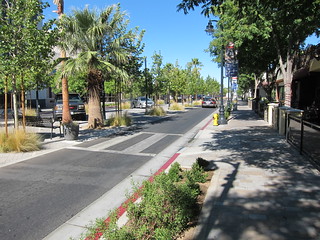Success Through Collaboration in Florida
 Of 52 documented Complete Streets policies in Florida, more than 20 were passed in 2012-2013. Florida network members were instrumental in the success of many of these policies.
Of 52 documented Complete Streets policies in Florida, more than 20 were passed in 2012-2013. Florida network members were instrumental in the success of many of these policies.
 Of 52 documented Complete Streets policies in Florida, more than 20 were passed in 2012-2013. Florida network members were instrumental in the success of many of these policies.
Of 52 documented Complete Streets policies in Florida, more than 20 were passed in 2012-2013. Florida network members were instrumental in the success of many of these policies.
 Moments ago I finished facilitating a webinar on regional approaches to Safe Routes to School through Metropolitan Planning Organizations (MPOS). The jargon involved even when clearly presenting on this topic would send even the most hardened Safe Routes to School practitioner running in the other direction. Yet, this is the point.
Moments ago I finished facilitating a webinar on regional approaches to Safe Routes to School through Metropolitan Planning Organizations (MPOS). The jargon involved even when clearly presenting on this topic would send even the most hardened Safe Routes to School practitioner running in the other direction. Yet, this is the point.
 Right now my work in the Bay Area region is at a very exciting phase. While earlier in the year our efforts were concentrated on our metropolitan planning organization (MPO)—the Metropolitan Transportation Commission (MTC)—our work now needs to focus on the nine counties of the San Francisco Bay Area.
Right now my work in the Bay Area region is at a very exciting phase. While earlier in the year our efforts were concentrated on our metropolitan planning organization (MPO)—the Metropolitan Transportation Commission (MTC)—our work now needs to focus on the nine counties of the San Francisco Bay Area.
 It has been a productive year for the Safe Routes Partnership in Southern California. This year, the Southern California team was off and running with a full-blown campaign at the Southern California Association of Governments (SCAG) to increase funding for active transportation in the 2012 Regional Transportation Plan and Sustainable Communities Strategy (RTP/SCS).
It has been a productive year for the Safe Routes Partnership in Southern California. This year, the Southern California team was off and running with a full-blown campaign at the Southern California Association of Governments (SCAG) to increase funding for active transportation in the 2012 Regional Transportation Plan and Sustainable Communities Strategy (RTP/SCS).
 We travel just over two miles to school each day with our two boys - by bike, of course, most days. I am proud that my ten-year old son is now riding his six-year old brother to school on a tag-along! Both boys insist on it now. This picture shows the Big Guy showing off his tough guy face on a recent school trip.
We travel just over two miles to school each day with our two boys - by bike, of course, most days. I am proud that my ten-year old son is now riding his six-year old brother to school on a tag-along! Both boys insist on it now. This picture shows the Big Guy showing off his tough guy face on a recent school trip.
 In Safe Routes to School we see countless examples of elementary schools led by passionate adults and fanatical students that knock walking and bicycling out of the proverbial park – but, as a movement, I believe we struggle to connect as frequently and in meaningful ways around active transportation with both middle and high school age students.
In Safe Routes to School we see countless examples of elementary schools led by passionate adults and fanatical students that knock walking and bicycling out of the proverbial park – but, as a movement, I believe we struggle to connect as frequently and in meaningful ways around active transportation with both middle and high school age students.
 There is a scene, from a once famous movie where this guy busts through the door to expel his undying affection for a woman. She completes him, and he wants to make sure she knows it.
There is a scene, from a once famous movie where this guy busts through the door to expel his undying affection for a woman. She completes him, and he wants to make sure she knows it.
I’m no Tom Cruise, but I want you to know: You complete me.
 Co-authored with Kathy Cooke, network coordinator - One of the most common interests shared by staff at the Safe Routes Partnership is a love of books. Reading books, belonging to book clubs, haunting book stores when we're not working -- you name it.
Co-authored with Kathy Cooke, network coordinator - One of the most common interests shared by staff at the Safe Routes Partnership is a love of books. Reading books, belonging to book clubs, haunting book stores when we're not working -- you name it.